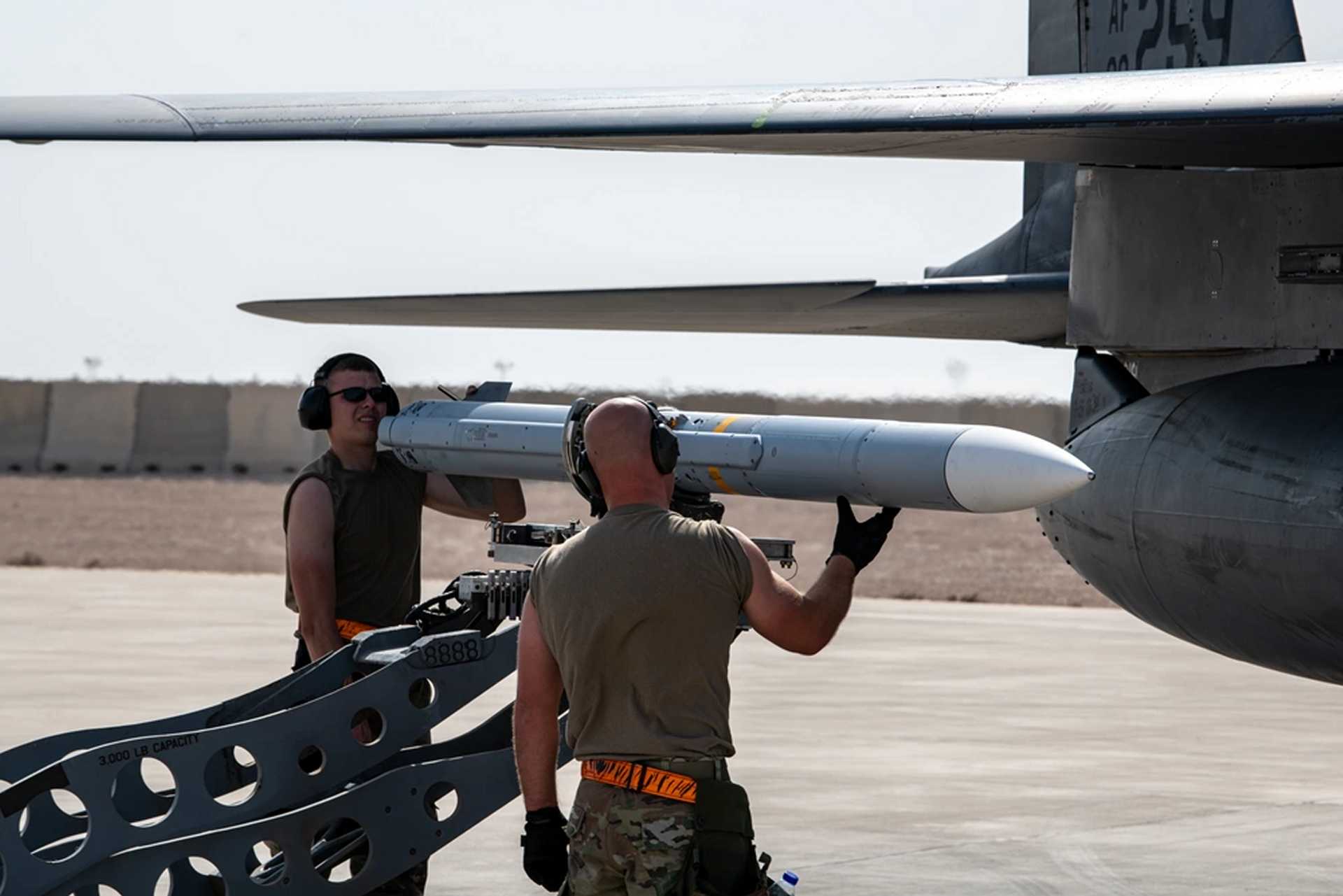Netherlands orders US-made AIM-120D3 air-to-air missiles for new F-35 fleet

{loadposition bannertop}
{loadposition sidebarpub}
On December 6, 2024, the US State Department approved a potential Foreign Military Sale (FMS) to the Netherlands, involving up to 226 AIM-120D-3 Advanced Medium Range Air-to-Air Missiles (AMRAAM) and related equipment, for an estimated cost of $807 million, further building on earlier purchases of AMRAAM variants by the Netherlands and aligning with the ongoing expansion of the Netherlands’ F-35 fleet. The primary contractor for this sale is Raytheon Missiles & Defense, located in Tucson, Arizona.Follow Army Recognition on Google News at this link
Compared to its predecessors, including the AIM-120C-7, the AIM-120D-3 offers a 50% increase in range, estimated between 160 and 180 kilometers, though specific figures remain classified. (Picture source: US DoD)
The requested items include 226 AIM-120D-3 Advanced Medium Range Air-to-Air Missiles (AMRAAM), five guidance sections with precise navigation systems such as M-Code or Selective Availability Anti-Spoofing Module (SAASM), and one AIM-120 AMRAAM Integrated Test Vehicle (ITV). Additional items include AMRAAM control sections, missile containers, KGV-135A encryption devices, spare parts, repair and return support, classified software, technical publications, transportation, engineering services, and logistics support. Raytheon Missiles & Defense, located in Tucson, Arizona, is designated as the principal contractor.
The AIM-120D-3, also known as the AMRAAM F3R (Form, Fit, Function Refresh), represents an upgraded variant within the AMRAAM series. It includes enhancements such as a two-way data link and GPS navigation to improve accuracy, particularly in electronic warfare environments. Compared to its predecessors, including the AIM-120C-7, the AIM-120D-3 offers a 50% increase in range, estimated between 160 and 180 kilometers, though specific figures remain classified. The missile’s updated guidance and electronic systems are designed to improve operational effectiveness in long-range engagements.
This sale follows a series of AMRAAM procurements by the Netherlands, which include the AIM-120C-7 and AIM-120C-8 variants. Previous transactions, such as the acquisition of 16 AIM-120C-8 missiles in 2020 for $39 million and 26 AIM-120C-7 missiles in 2017 for $53 million, have progressively upgraded the Royal Netherlands Air Force’s (RNLAF) inventory. The AIM-120 series has been integrated with the F-35 Lightning II, one of the key platforms in the Netherlands’ air defense strategy.
The AIM-120 series has a service history spanning multiple international conflicts, with an estimated 14,000 units produced for the United States and 33 other countries. The missile is compatible with various platforms and has achieved several air-to-air kills. The AIM-120D-3 variant, incorporating F3R improvements, reflects an ongoing modernization effort to address emerging operational requirements.
This procurement aligns with the Netherlands’ broader defense strategy as outlined in the 2024 Defense Memorandum. The memorandum details a €2.4 billion increase in defense spending, with investments in additional F-35A fighter jets, NH90 NATO Frigate Helicopters, anti-submarine frigates, and Leopard 2A8 main battle tanks. The Netherlands also plans to address ammunition shortages and expand its cyber capabilities. The RNLAF currently operates 39 F-35A aircraft, with plans for additional deployments by 2024.
The Netherlands’ defense modernization efforts also include the purchase of AIM-9X Block II Sidewinder missiles for $691 million, approved in September 2024. This sale involved 246 tactical missiles and related support. The AIM-9X Block II integrates lock-on after launch (LOAL) capability, a datalink, and improved maneuverability, complementing the expanding fleet of F-35 aircraft.
The acquisition of the AIM-120D-3 supports NATO interoperability requirements and enhances the Netherlands’ air defense capabilities. The 2024 Defense Memorandum emphasizes readiness for potential regional threats and compliance with NATO spending benchmarks. Current plans prioritize maintaining operational readiness and addressing evolving security challenges, including those posed by increased geopolitical tensions in Europe.

{loadposition bannertop}
{loadposition sidebarpub}
On December 6, 2024, the US State Department approved a potential Foreign Military Sale (FMS) to the Netherlands, involving up to 226 AIM-120D-3 Advanced Medium Range Air-to-Air Missiles (AMRAAM) and related equipment, for an estimated cost of $807 million, further building on earlier purchases of AMRAAM variants by the Netherlands and aligning with the ongoing expansion of the Netherlands’ F-35 fleet. The primary contractor for this sale is Raytheon Missiles & Defense, located in Tucson, Arizona.
Follow Army Recognition on Google News at this link
Compared to its predecessors, including the AIM-120C-7, the AIM-120D-3 offers a 50% increase in range, estimated between 160 and 180 kilometers, though specific figures remain classified. (Picture source: US DoD)
The requested items include 226 AIM-120D-3 Advanced Medium Range Air-to-Air Missiles (AMRAAM), five guidance sections with precise navigation systems such as M-Code or Selective Availability Anti-Spoofing Module (SAASM), and one AIM-120 AMRAAM Integrated Test Vehicle (ITV). Additional items include AMRAAM control sections, missile containers, KGV-135A encryption devices, spare parts, repair and return support, classified software, technical publications, transportation, engineering services, and logistics support. Raytheon Missiles & Defense, located in Tucson, Arizona, is designated as the principal contractor.
The AIM-120D-3, also known as the AMRAAM F3R (Form, Fit, Function Refresh), represents an upgraded variant within the AMRAAM series. It includes enhancements such as a two-way data link and GPS navigation to improve accuracy, particularly in electronic warfare environments. Compared to its predecessors, including the AIM-120C-7, the AIM-120D-3 offers a 50% increase in range, estimated between 160 and 180 kilometers, though specific figures remain classified. The missile’s updated guidance and electronic systems are designed to improve operational effectiveness in long-range engagements.
This sale follows a series of AMRAAM procurements by the Netherlands, which include the AIM-120C-7 and AIM-120C-8 variants. Previous transactions, such as the acquisition of 16 AIM-120C-8 missiles in 2020 for $39 million and 26 AIM-120C-7 missiles in 2017 for $53 million, have progressively upgraded the Royal Netherlands Air Force’s (RNLAF) inventory. The AIM-120 series has been integrated with the F-35 Lightning II, one of the key platforms in the Netherlands’ air defense strategy.
The AIM-120 series has a service history spanning multiple international conflicts, with an estimated 14,000 units produced for the United States and 33 other countries. The missile is compatible with various platforms and has achieved several air-to-air kills. The AIM-120D-3 variant, incorporating F3R improvements, reflects an ongoing modernization effort to address emerging operational requirements.
This procurement aligns with the Netherlands’ broader defense strategy as outlined in the 2024 Defense Memorandum. The memorandum details a €2.4 billion increase in defense spending, with investments in additional F-35A fighter jets, NH90 NATO Frigate Helicopters, anti-submarine frigates, and Leopard 2A8 main battle tanks. The Netherlands also plans to address ammunition shortages and expand its cyber capabilities. The RNLAF currently operates 39 F-35A aircraft, with plans for additional deployments by 2024.
The Netherlands’ defense modernization efforts also include the purchase of AIM-9X Block II Sidewinder missiles for $691 million, approved in September 2024. This sale involved 246 tactical missiles and related support. The AIM-9X Block II integrates lock-on after launch (LOAL) capability, a datalink, and improved maneuverability, complementing the expanding fleet of F-35 aircraft.
The acquisition of the AIM-120D-3 supports NATO interoperability requirements and enhances the Netherlands’ air defense capabilities. The 2024 Defense Memorandum emphasizes readiness for potential regional threats and compliance with NATO spending benchmarks. Current plans prioritize maintaining operational readiness and addressing evolving security challenges, including those posed by increased geopolitical tensions in Europe.






